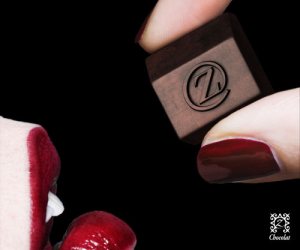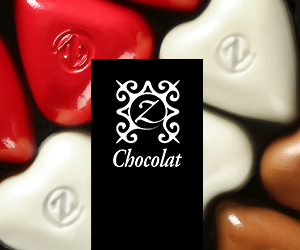
Nutrition is the foundation of overall health, and for cats, it plays a particularly influential role in the appearance and manageability of their coat. A well-balanced diet not only ensures internal wellness but also manifests visibly through a cat's skin condition, fur texture, and grooming behavior. While grooming practices and environment contribute to the maintenance of a cat's physical appearance, dietary choices exert a powerful influence on shedding, dander, skin irritation, and the quality of fur. A sleek, mat-free coat begins with internal nourishment, and understanding the dietary elements that support these outcomes helps owners promote both aesthetic and health advantages for their pets.
How Nutrition Affects Skin Health
Optimal skin health in cats is directly linked to a diet that delivers the right balance of fatty acids, particularly omega-3 and omega-6, which support cellular integrity and help maintain moisture levels in the skin. These nutrients reduce the likelihood of flakiness, itchiness, and dryness, all of which can contribute to excessive grooming or scratching behaviors that disrupt coat quality. Protein, the cornerstone of feline nutrition, is also critical to skin cell regeneration and tissue repair. Without sufficient high-quality animal protein, a cat's skin can become more susceptible to inflammation and irritation. Vitamins A and E further enhance epidermal strength and resilience, helping the skin form a protective barrier that supports grooming ease and fur sheen. When the skin is well-nourished, the coat grows more evenly and is easier to maintain through normal grooming habits or human-assisted grooming routines.
Role of Protein in Coat Appearance
Since cats are obligate carnivores, they require diets rich in high-quality animal proteins to support a multitude of biological functions, including the production of keratin, the structural protein that makes up hair. A deficiency in essential amino acids like lysine, methionine, and cysteine may result in a coat that is brittle, patchy, or dull in color. Strong protein intake from meat-based sources fuels both fur density and the cat's ability to shed and regrow hair efficiently. Fur that grows under these optimal nutritional conditions is smoother to the touch, more vibrant in tone, and far less prone to tangles or matting. For long-haired breeds, this is particularly beneficial, as strong protein-based support helps prevent breakage and encourages natural shedding patterns that are easier to manage with regular grooming techniques.
Fats and Oils for Gloss and Softness
The incorporation of fats into a cat's diet is not only essential for energy but also directly impacts the glossiness and texture of its fur. Omega-rich oils sourced from fish, poultry fat, or flaxseed serve as natural conditioners for the coat, promoting softness and a supple quality that reduces friction during brushing and lessens the buildup of static or knots. These oils also help the skin produce sebum, a natural oil that lubricates each hair shaft and prevents dryness. Cats receiving a proper balance of dietary fats tend to exhibit coats that reflect light and resist matting, especially in breeds known for dense or double-layered fur. Additionally, these nutrients help reduce shedding by reinforcing hair follicles, leading to fewer loose hairs and an overall cleaner grooming experience.
Hydration and Its Grooming Benefits
Water intake often receives less attention than it deserves, yet hydration levels profoundly influence both skin elasticity and fur softness. Cats consuming adequate moisture are less prone to flaky skin or brittle fur, which can result in tangles and discomfort during grooming. For cats that primarily consume dry kibble, encouraging increased water intake through water fountains or supplementing meals with wet food can make a significant difference. Proper hydration also supports kidney function and toxin removal, processes that indirectly affect skin clarity and the coat's appearance. When internal systems are functioning efficiently, external indicators like fur texture and skin cleanliness tend to improve, making the grooming process more pleasant for both the cat and the owner.
Fiber and Digestive Clarity
Digestive health plays a subtle yet meaningful role in coat condition, as nutrients must be effectively absorbed in the gut before they can nourish the skin and hair. A diet that includes the right type of fiber helps regulate bowel movements, reduce gastrointestinal stress, and support the microbiome, all of which improve nutrient assimilation. This efficiency ensures that the vitamins, minerals, and proteins consumed are bioavailable and actively working to enhance the cat's coat. Moreover, fiber aids in the prevention of hairball accumulation, a common grooming-related issue in cats. Reducing hairball formation not only protects the digestive system but also lessens the grooming burden, as excess fur is more likely to pass naturally rather than be regurgitated or contribute to internal blockages.
Behavioral Changes from Diet
Cats on a nutritionally balanced diet often display calmer grooming behavior due to the absence of skin irritants or discomfort that would otherwise trigger excessive licking, biting, or scratching. A reduction in stress-induced grooming habits can preserve fur integrity and reduce the chance of bald spots or overgroomed patches. Balanced energy levels and reduced inflammation contribute to an overall more harmonious grooming routine, where the cat maintains its coat without anxiety or compulsive behaviors. This natural grooming rhythm helps preserve the fur's alignment and texture, which is especially beneficial for cats prone to tangling or for those with higher grooming needs due to fur length or breed-specific characteristics.
Dry Food Considerations for Grooming
Dry cat food offers both benefits and considerations when it comes to grooming outcomes. High-quality kibble formulations often include concentrated nutrients, including essential fatty acids and protein, which directly contribute to skin and coat health. However, not all dry foods are created equally, and many lower-grade options contain excessive carbohydrates, fillers, or preservatives that may exacerbate skin sensitivities or trigger allergic reactions. Selecting a premium dry formula that emphasizes meat-based ingredients and includes omega-rich supplements can support grooming efficiency by reducing dander, shedding, and mat formation. Additionally, the crunchy texture of dry cat food may assist in dental health, which has an indirect influence on grooming through the cat's comfort and overall wellness. When paired with appropriate hydration strategies, dry food can be a reliable component of a grooming-conscious feline diet.
Influence on Professional Cat Grooming
Cats that are nourished with a balanced and health-conscious diet are typically easier to handle during professional cat grooming sessions. A coat that is naturally soft, hydrated, and free from excessive shedding or oil buildup allows for quicker, less stressful grooming appointments. Groomers often observe that well-fed cats tolerate brushing and trimming more comfortably, as their fur is less likely to pull, tug, or trap debris. Nutrition also reduces the risk of dermatological conditions that can complicate grooming, such as fungal infections or eczema. This makes maintenance grooming more efficient and less invasive, preserving the cat's comfort and appearance while reducing the frequency of emergency deshedding or medical grooming interventions.
Long-Term Advantages for Cat Owners
For cat owners, the benefits of feeding a high-quality diet extend beyond aesthetics and into convenience and reduced maintenance. When a cat's diet supports healthy skin and fur, there is often less shedding on furniture, fewer fur clumps in the environment, and a diminished need for daily grooming. This is especially advantageous for busy households or multi-cat families, where maintaining grooming routines can become time-consuming. Additionally, a properly nourished coat deters pests and lessens the frequency of topical treatments, as the skin's barrier function is strengthened. A long-term commitment to appropriate feline nutrition ultimately streamlines cat grooming responsibilities, improves the animal's quality of life, and contributes to a more hygienic and pleasant living space.
Choosing a diet that emphasizes premium ingredients and caters to the specific needs of a cat's breed, age, and lifestyle is a foundational strategy in managing coat health. The ripple effects of that decision influence every aspect of feline grooming, from ease of brushing to reduced medical issues related to the skin and coat. Whether relying on dry cat food or incorporating wet formulations and targeted supplements, the goal remains the same: to create internal conditions that support a naturally beautiful and manageable coat. With nutrition guiding the process, cat grooming becomes less of a challenge and more of a refined expression of care and well-being.
EDITORIAL POLICY
The Flash List is dedicated to providing trustworthy editorial content by maintaining strict ethical standards, journalistic integrity, and credible professionalism regardless of any remuneration as working media. The Flash List is not affiliated with third-party companies mentioned and makes no endorsement or guarantee expressed or implied. The preceding article, which contains affiliated link(s) for which compensation was received, is intended for informational reference only and does not constitute advice of any kind. Moreover, a qualified professional should be consulted regarding any lifestyle consideration, medical treatment, or monetary transaction, etc. Content is published in accordance with USFTC regulations and terms and conditions.
MORE ON THE FLASH LIST
































